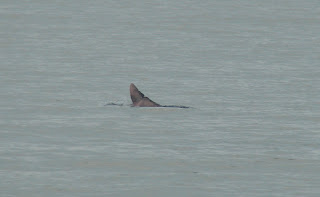 Kenting National Park
Kenting National ParkTaiwan, an island on the Pacific Rim, straddles the Tropic of Cancer. Taiwan is generally not regarded as one of the great birding or naturalist destinations of the Oriental faunal region but it is indeed a birder’s or nature lover’s paradise that is all too often overlooked.
Taiwan is better known as one of Asia’s little dragons. Taiwan’s economic miracle tends to be what people associate Taiwan with. People think of countless toys, gadgets and electronic wares all labeled, “Made in Taiwan.”
Taiwan’s economic growth came at a great cost to Taiwan’s fragile environment. Much of natural Taiwan disappeared in clouds of pollution and storms of development but there are still natural areas left and these areas desperately need protection.
Taiwan, which covers an area of 36,000 square kilometers, may be small (0.025 percent of the total land on earth) but it showcase’s the entire range of climates from tropical to subarctic. This gives rise to an amazingly high level of biodiversity that few places on earth can match.
Taiwan, rising from tropical beaches to the highest mountains in East Asia (Yushan Peak 3952m, with over 200 peaks higher than 3000m), is in many ways a living laboratory housing samples of almost all of Asia’s ecosystems.
 Hehuanshan area
Hehuanshan area“Small but incredibly diverse and beautiful” aptly describes Taiwan’s natural environment. Taiwan boasts over 46, 360 described species of flora and fauna. Ten percent of the world’s marine species are found in the waters around Taiwan. 4,200 species of vascular plants grow in Taiwan which includes an amazing 700 species of ferns.
Taiwan has a very high level of endemism:-25 percent of Taiwan’s 4,200 species of vascular plants, 30 percent of 70 mammal species, 12 percent of 150 freshwater fish species, 60 percent of the 20,000 insect species which includes almost 400 butterfly species, 31 percent of amphibians, and 22 percent of reptiles. Of Taiwan’s approximately 520 recorded bird species 17 are endemic with 67 endemic subspecies.
Because of Taiwan’s small land area, the impact of over exploitation of its natural resources all too often leads to catastrophic results. The exploitation of Taiwan’s forests by the camphor and timber industries has destroyed much of the island’s old growth forests. The uncontrolled hunting of the Formosan sika deer lead to its near extinction by the early part of the twentieth century. This, coupled with post World War II development resulting in the destruction of remaining sika habitat, pushed the species over the brink and by the late 1960s the species became extinct in the wild. Today, a small token population of this once abundant species has been reintroduced to Kenting National Park using “wild turned” domestic stock. Taiwan’s Clouded Leopards haven’t been seen for years and are almost certainly now extinct.
 Formosan Sika Deer
Formosan Sika DeerWhaling in the waters around Taiwan has resulted in the extermination of the population of humpback whales that once wintered in the waters of southern Taiwan. In fact, large whales haven’t been observed in the waters around Taiwan for more than two decades but whaling records show that humpback, sperm, fin, blue, and sei whales were all taken in these waters during the twentieth century.
It is also known that the dugong was found off the west coast before development destroyed its seagrass habitat. Today, a unique Taiwan population of fewer than a hundred Indo-Pacific humpback dolphins looks likely to follow their recently extinct Yangtze River dolphin cousins over the edge unless something drastic is done to save them. Despite their status as a protected species and their desperately small population size, the Taiwan Government seems willing to deal the death blow through further development of heavy industry along the west coast fueled by water from the controversial Hushan Dam project.
 Taiwan Humpback Dolphin Fluke
Taiwan Humpback Dolphin FlukeTaiwan also occupies a prominent position on the East Asian Flyway. Taiwan is the winter home of the threatened Black-faced Spoonbill and Saunders’s Gull. The fall raptor migration through Taiwan’s southern tip is amongst the world’s twenty largest, with figures as high as 50,000 raptors from 26 diurnal raptor species being recorded in a single day at the climax of the fall migration period.
 Crested Serpent Eagle
Crested Serpent EagleTaiwan has a total of 53 IBAs or Important Bird Areas. For its size, Taiwan has a very high number of IBAs. Only 11 or 21% fall within totally protected areas. 17 IBAs or 32% fall within partially protected areas. That leaves 25 or 47% of Taiwan’s IBAs without any protection. Huben, the summer home of the rare and stunningly beautiful Fairy Pitta
Pitta nympha, is one of the IBAs without any protection and much of this IBA’s important habitat is threatened by the construction of the Hushan Dam (422 hectares excluding access roads) . A dam that will supply the water needs to further develop heavy industry on the west coast in a country which ranks number three in the world for per capita CO2 emissions (Taiwan’s 11.9 tons/per capita emission rate far exceeds the 3.9 world average).
Mark Wilkie,
Wild at Heart Legal Defense Association









